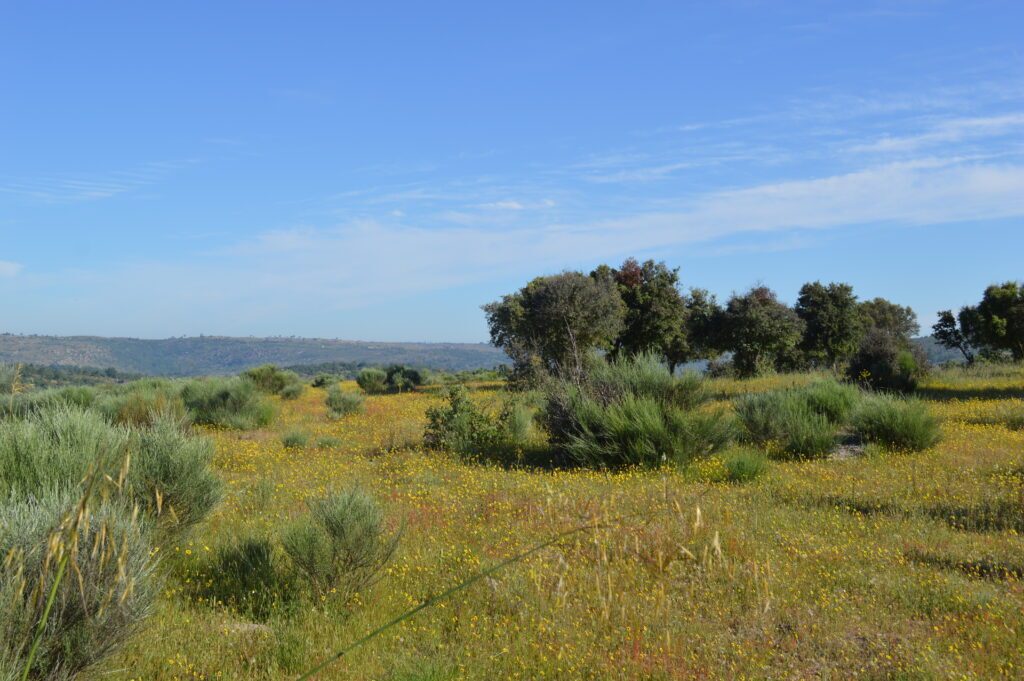Vale Carapito, in the Greater Côa Valley, near Vilar Maior, displays a diverse mosaic of natural habitats, irrigated by the Cesarão river and the Alfaiates stream. This area situated on the plateau of the Iberian Meseta, an inland territory, has "suffered" from the abandonment of farming, domestic grazing practices and rural exodus for several decades.
In this renaturalised landscape, the marks of an agricultural past that ended during the rural exodus of the 20th century can still be seen. Dry stone walls and ruins of water mills are now crossed by the roots of large alders, ash trees and various species of oak trees.
As a result, the patches of pyrenean oak have once again increased in the region, creating a green corridor that connects with Spain. This has allowed the dispersal and increase of several species of wildlife, namely the Roe Deer and the Red Deer.
Priority species for conservation, such as the Iberian Wolf, rare in the region, have benefited from the expansion of these woods and their main prey, the wild herbivores.
This is also a territory of choice where we can still find a great variety of bird species such as the Black Stork, the Black Vulture, the Griffon Vulture, the Egyptian Vulture, the Golden Eagle, the Short-toed Eagle, the Booted Eagle, the Black-winged Kite, the Red Kite, among others.
Sorraia horses arrived at Vale Carapito in May 2021.




